Display technology has always been the source of driving the development of the television industry. From the earliest CRT era television was defined as the "big brick", and then the emergence of LCD directly changed the form of television, the bulky big head was completely kicked out of the mainstream market This kind of revolutionary update continues incessantly. However, in the long river of evolution of television sets, there is no lack of revolutionary display technology. When it was born, it blew through mountains and rivers, but it immediately disappeared.
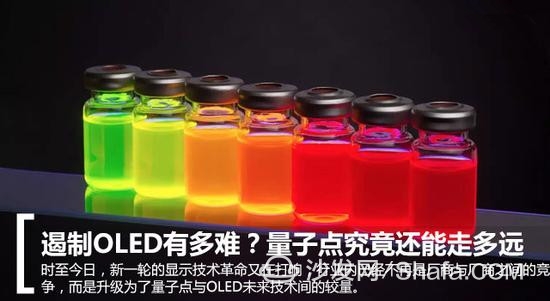
Among them, the short-lived fate of "rear shooting" can definitely be considered as one of them. Our concept of rear projection may be rather vague. One is that it was born earlier, and one reason is that its popularity is relatively short, but at that time, many TV manufacturers pushed back-projection TV, so they captured some users. . The author once bought a Panasonic rear-projection TV in his home, but in the impression that it took less than two years to develop a variety of minor problems, coupled with the picture is blurred, affected by the ambient light, then was Obsolete. The price of rear-projection TV at the time was not cheap, so it should also be regarded as the "victim" of rear-projection TV.
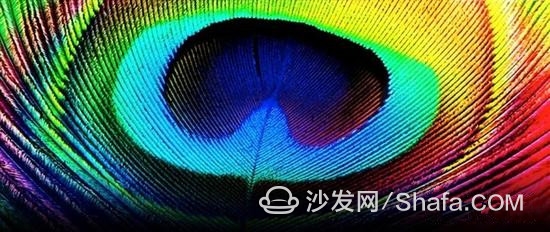
Compared with traditional TVs, the rear projection has a larger size at that time and radiation is relatively small. It has become synonymous with high-end products for a time, but its disadvantages outweigh its advantages. Due to the high cost of rear projection technology, there is no advantage in price. The service life of less than 20,000 hours is difficult to meet the daily needs of the family. The high maintenance cost has become a place where the rear projection TV is criticized by public opinion, plus I mentioned earlier. Problems such as the blurring of the picture caused the rear projection TV to be quickly replaced by a flat panel TV.
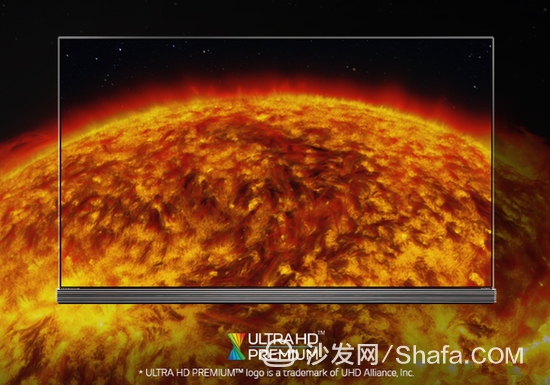
Today, a new round of display technology revolution is starting again. The industry is no longer a competition between vendors and manufacturers, but is an upgrade between quantum dots and OLED technology in the future. When the two have just entered the line of sight, OLEDs have been criticized for their good yield and longevity. Quantum dots are therefore more promising. However, as OLED continues to improve, click “Life/Burn/Benefit†for detailed reading! OLED has completely eradicated the three major diseases, Quantum Dots has been exploded in the industry is still in the technology's "infancy", and for a time Scorpio is more inclined to OLED. This also makes us worry about the future of quantum dots, and it will not go back to the old road? Let us analyze it quietly.
The concept of quantum dots is confusedConcept confusion: photoluminescence and electroluminescent quantum dot technology
Since we want to talk about the future of quantum dots, we must first take a rational look at the current development of quantum dots. The quantum dot actually does not emit light. It is a semiconductor nanocrystal. When it is stimulated by "light" or "electricity," it emits colored light. The color of the light is determined by the composition and size of the quantum dots. Therefore, by changing the shape of the quantum dots, high-pure pure-color light of red to blue light can be obtained, which has congenital advantages in color. The two major application directions of quantum dots in display technology are often confused.
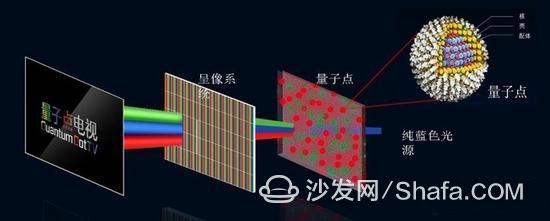
Actually, the QD TVs currently on the market are all based on the "photoluminescent" quantum dot backlight technology (hereinafter collectively referred to as the first generation quantum dot technology). The purpose is to solve the problem that the ordinary LCD TV backlight is not bright enough. problem. This color deviation is reflected in the screen image, and the viewer may feel that the picture is cold or warm and does not reach the best viewing experience. The use of blue LEDs to obtain high-purity white light through optical materials (quantum dot films) with red and green quantum dots has made this problem very well solved, and at the same time it has been able to reproduce very brilliant colors, belonging to quantum dots. The application of technology in the field of LCD compromise.

According to the light-emitting principle of the current first-generation quantum dot technology, its essence is still liquid crystal. It is generally said that only a quantum dot film is added on the basis of the liquid crystal. Although this technology can improve image quality to a certain extent, we still need to draw a big question mark on whether we can afford a premium of tens of thousands yuan and the name of "revolutionary technology." As quantum dot technology continues to be well-known, this problem is constantly being amplified.
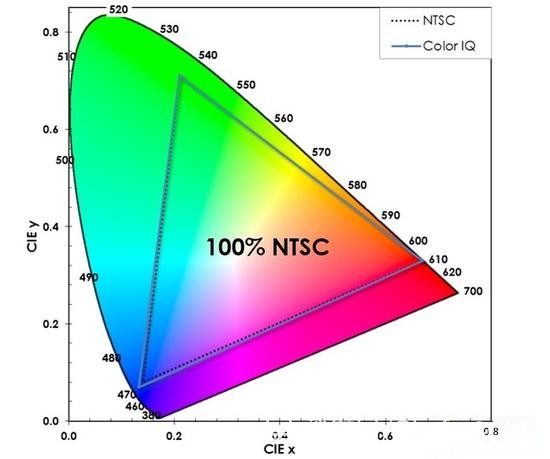
Earlier we mentioned that many industry experts claim that quantum dot technology is currently in its infancy. Actually, the first-generation quantum dot technology is only a transition, and eventually it will reach the “electroluminescent†quantum dot (hereinafter collectively referred to as the second-generation quantum dot technology). It will take at least 3-5 years. The ultimate goal of quantum dot technology is to achieve self-illumination after power-on, eliminating the need for backlight support. At present, the self-luminous properties of OLED materials have already achieved this goal, which will inevitably make the second-generation quantum dot technology slightly obscure.
QLED is only an imitator of OLED?
Structure is basically the same: QLED is the imitator of OLED?
In order to make a quantum leap in quantum dot technology, there are vendors that have begun to develop QLEDs, the "second generation quantum dot technology of photoluminescence." It is also based on the luminescent properties of quantum dots and belongs to the more advanced applications of quantum dots in display technology. It is no longer that blue light produces a white light through a layer of quantum dot material to illuminate the screen, but that the quantum dot itself is illuminated by electric drive and the image is produced by color mixing. Liquid crystals, quantum dot films, and backlight units are no longer needed. This also makes the QLED and OLED have similar principles in the display mode, and the structure is also very simple.

In the manufacturing process of the panel, the most widely used manufacturing method for OLEDs is the evaporation method, and solution processing can also be used. However, this technology is still in research and development. As early as 2013, LG Display has already introduced the method of vapor deposition. Inch Full HD OLED TV. The QLED second-generation quantum dot panel can only use solution processing engineering. The complexity of this process is undoubtedly higher than the evaporation method, and the guarantee for the yield rate is also unknown.
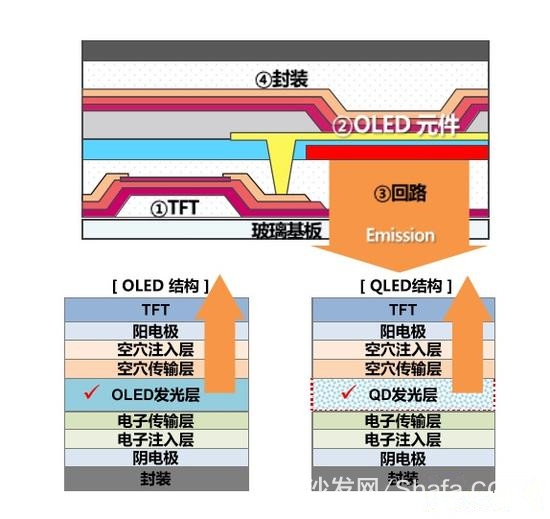
The OLED is basically the same as the QLED panel under development, but differs only in the luminescent material (OLED is an organic luminescent layer, QLED is a QD luminescent layer), and the rest is completely the same from the cathode electrode to the package. However, because the QD material is very sensitive and cannot be exposed to air, a vacuum must be made in the luminescent layer. This is a problem that needs to be solved in the QD second-generation quantum dot technology research and development. However, the OLED organic luminescent material does not exist in this respect. Concerns.
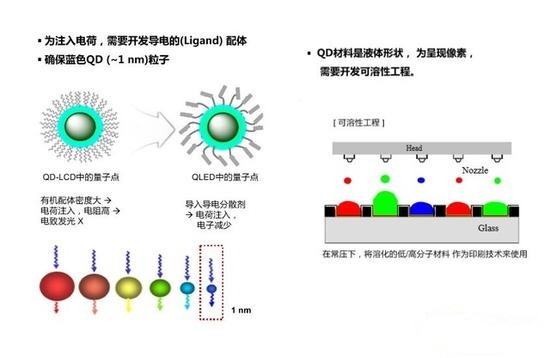
In addition, there are many problems that QLEDs need to solve. The first is to develop new quantum dot materials, that is, to inject charge into the quantum dots so that they can conduct electricity. Secondly, because QD materials are liquid in shape and can only take soluble engineering, the development of print display technology is also a top priority. QLED will undoubtedly need to go a long way in research and development. It is even more unknown that it will surpass OLED after successful R&D.
Upstream manufacturers have changed
·The outlook is worrying: Quantum dot giants have been withdrawn
At present, QLED is still in the research and development stage, and there are still many difficult problems to overcome. The time when the product will come out is also far-off. Recently, a news hit the quantum dot technology even more heavily. That is, QD Vision, a quantum dot technology giant, suffered a divestment from its major shareholder. It is said that the senior team of QD Vision team has announced the dissolution of the core team and many projects have been suspended. The divestment of major shareholders put the Quantum Point giant under unprecedented pressure, and it has caused many people in the industry to linger.
People who don’t know much about the QD technology background may not be familiar with QD Vision. In fact, he is the leader in global quantum dot display technology. He mainly performs color quality improvements including TV and other display screens, and he is proud of it. The Color IQ product line mainly uses quantum dot technology for R&D, and is recognized by the industry as not only a big power. As far as quantum dot technology is concerned, QD Vision has the world's largest quantum dot manufacturing facility. As an upstream supplier to many companies, this crisis is not just QD Vision itself.
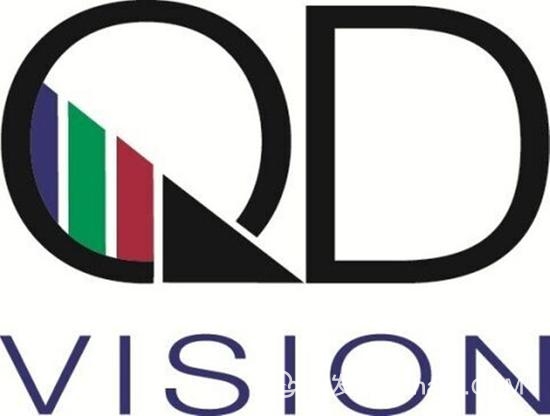
Capital is a benchmark for the market, and it is also an outlet for prying into the strength of a company. Quantum dot giant QD Vision has now been divested by major shareholders, and its operating conditions must have been a major crisis. Investors are skeptical about the quantum dot technology and its market development prospects. When it is unable to bring considerable returns to investors, it is when the market's wind direction changes. The sales of quantum dot TVs declined, and many orders were withdrawn. This is also the main reason for the current situation.
The outbreak of the QD Vision crisis will inevitably affect the current status of quantum dot technology in the market. Under the condition that QLED's second-generation quantum dot technology is not yet clear, the current quantum dot TV has encountered a crisis of confidence. In the near future, whether OLED technology will have a leap-forward development, QLED second-generation quantum dot technology will encounter bottlenecks in the development and fetal death, it is still very difficult to predict. However, it is undeniable that quantum dot technology is currently facing unprecedented pressure and hopes that it will not repeat the mistakes of the rear projection.
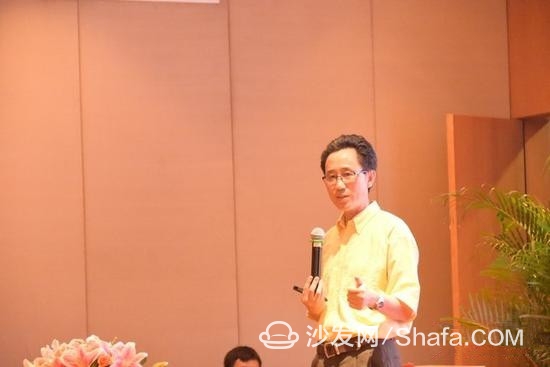
Of course, the future of Quantum Dots is not all bad news. With QD Vision's on-the-spot collapse, it will undoubtedly bring more opportunities to domestic quantum dot companies. Although display technology is not China's strength, China is in a leading position in the study of quantum dots. Professor Peng Xiaogang, a professor at Zhejiang University and a senior expert on quantum dots, is one of the representatives. And because OLED's panel production is not mature enough every year, this will undoubtedly win more time for QLED research.
19V Detachable Plug Power Adapter
19V Plug in wall charger with interchangeable plugs, AC DC switching power adapter with detachable AC plug, universal adapter, switching interchangeable power supply, interchangeable power supplies,19V Detachable Plug Power Adapter with 6 different plugs types (CN, USA, EU, KR,AU and UK).
19V detachable plug power adapter for tablet, bluetooth speaker, massage chair, humidifier, juice extractor, coffee machine, small household appliance, fingerprint scanner, CCTV camera-etc.
With these 6 interchangeable plugs -- CN,KR,US,EU,AU,UK plug, you can only take one 19V plug in wall power adapter with you when you traveling among these 6 countries.
We can also make it with more plugs if you tell us your specific requirement.

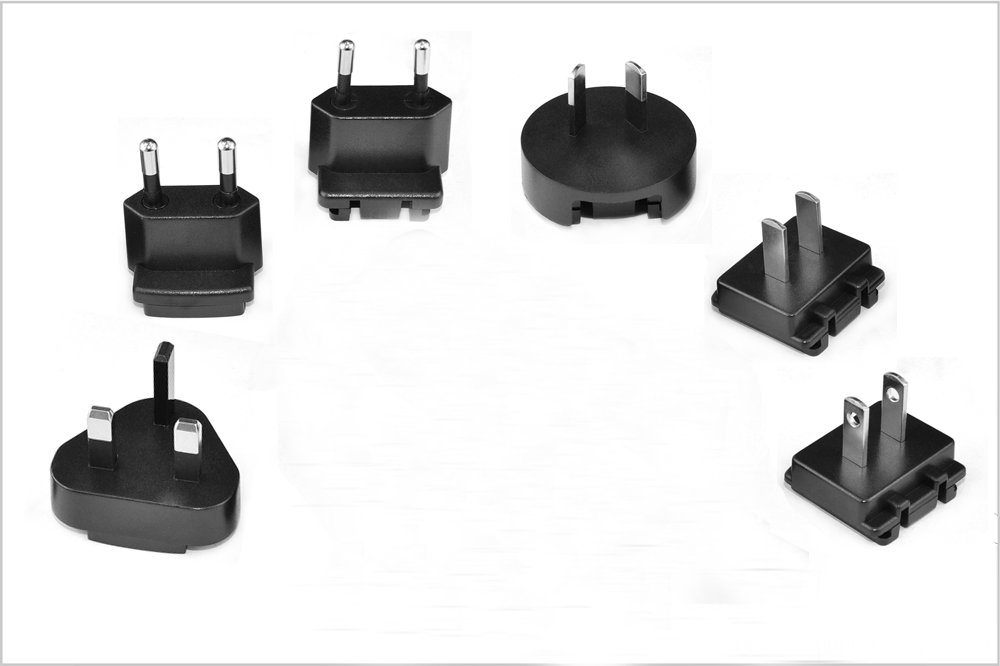
19V Detachable Plug Power Adapter,Detachable Plug Power Adapter
Shenzhen Juyuanhai Electronic Co., Ltd. , https://www.powersupplycn.com